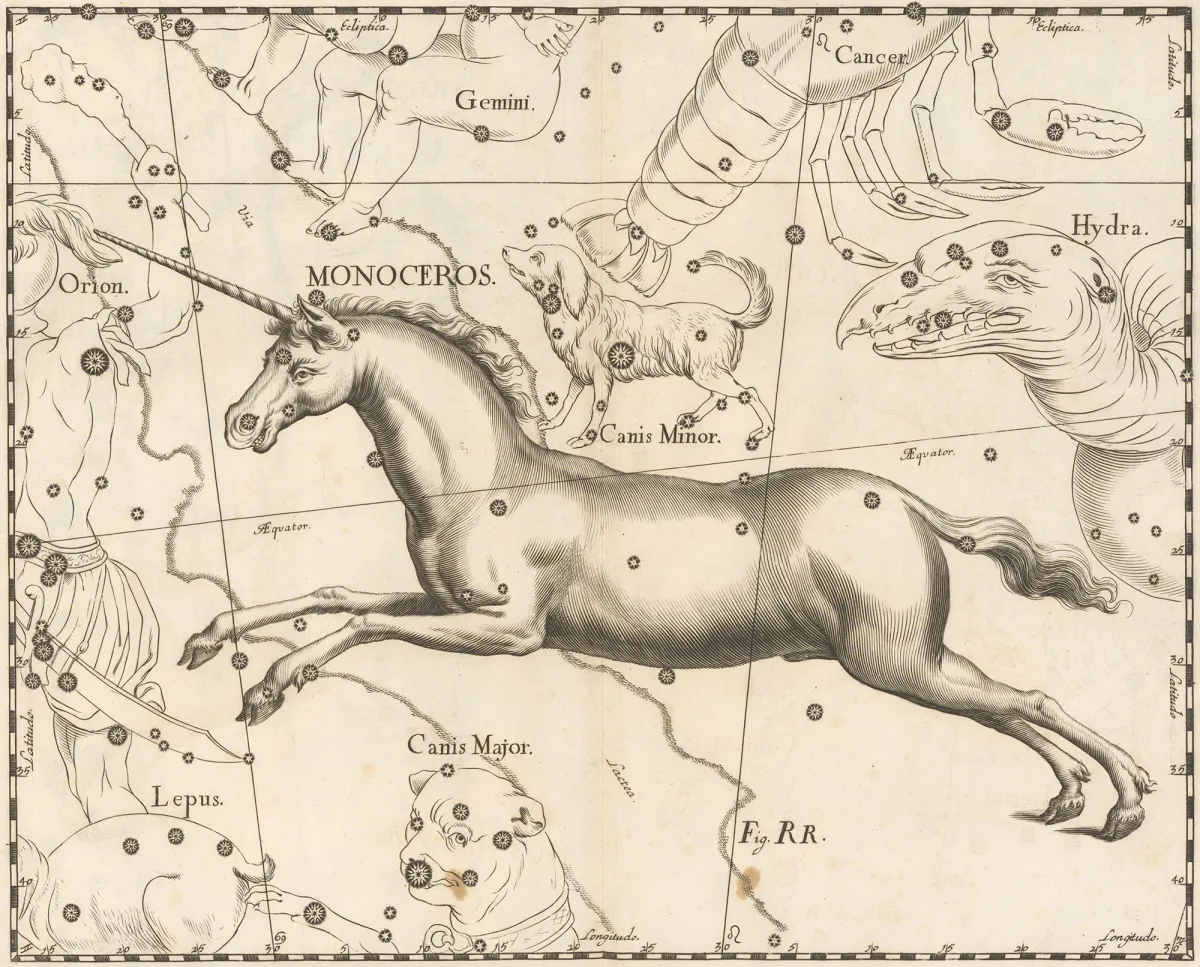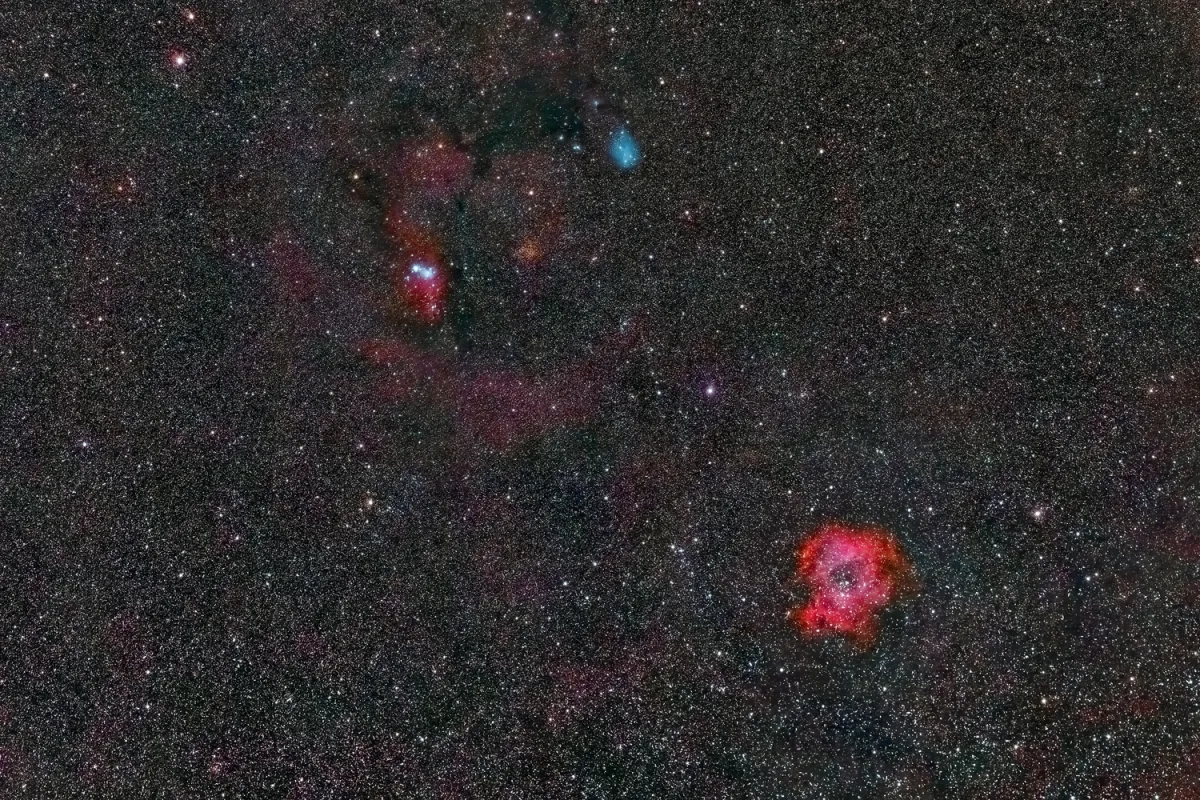Constellation Monoceros (Unicorn)

Properties
Monoceros is an inconspicuous constellation surrounded by conspicuous constellations like Gemini in the north, Orion in the west and Canis Maior in the south. The band of the Milky Way runs across the constellation and supplies it with a multitude of open star clusters and bright, diffuse nebulae - including the star cluster of the Rosette Nebula, which can be seen with the naked eye. The constellation area is 482 square degrees and the centre culminates around midnight on January 5th. [9, 15]
| HR 2422 | Plaskett's Star |
| IAU Name | Monoceros |
| IAU Genitive | Monocerotis |
| IAU Abbr. | Mon |
| English Name | Unicorn |
| Culmination at local midnight | 3 January |
| Season (Latitude +0.0°) | September … June |
| Right Ascension (J2000.0) | 05h 55m 52s … 08h 11m 24s |
| Declination (J2000.0) | -11° 22' 08" … +11° 56' 00" |
| Area | 482 deg2 |
| Neighbours (N↻) | Gem, Ori, Lep, CMa, Pup, Hya, CMi |
Deep-Sky Object Descriptions
IC 447
IC 2177
NGC 2170
NGC 2237+
NGC 2261
NGC 2264
NGC 2301
NGC 2346
Sh 2-294
Catalogues
History
Although unicorns play an essential role in numerous legends and fables, this constellation was not yet known in ancient times. It was included in his star map by Kepler's son-in-law, the mathematician Jakob Bartsch, in 1624 after it had been used sporadically beforehand. [7] Others attribute this constellation to Johannes Hevelius, who is said to have drawn it a few decades later, in 1690. [21]

